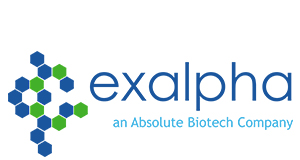Sheep anti-Cytochrome C
Sheep anti-Cytochrome C, Polyclonal, Clone: Polyclonal
Artikelnummer
EXAA195P
Verpackungseinheit
200 µl
Hersteller
Exalpha Biologicals Inc
Verfügbarkeit:
wird geladen...
Preis wird geladen...
Clone: Polyclonal
Background: Electron carrier protein. The oxidized form of the cytochrome c heme group can accept an electron from the heme group of the cytochrome c1 subunit of cytochrome reductase. Cytochrome c then transfers this electron to the cytochrome oxidase complex, the final protein carrier in the mitochondrial electron-transport chain.Plays a role in apoptosis. Suppression of the anti-apoptotic members or activation of the pro-apoptotic members of the Bcl-2 family leads to altered mitochondrial membrane permeability resulting in release of cytochrome c into the cytosol. Binding of cytochrome c to Apaf-1 triggers the activation of caspase-9, which then accelerates apoptosis by activating other caspases.Defects in CYCS are the cause of thrombocytopenia type 4 (THC4) also known as autosomal dominant thrombocytopenia type 4. Thrombocytopenia is the presence of relatively few platelets in blood. THC4 is a non-syndromic form of thrombocytopenia. Clinical manifestations of thrombocytopenia are absent or mild. THC4 may be caused by dysregulated platelet formation.
Positive Control: Rat1 cell line; Mitochondrion matrix
Immunogen: Full length recombinant Cytochrome
Purification Method: Whole Antiserum, no purification
Formulation: Whole sheep antiserum, no carrier or preservative added.
UniProt: P00011 (Canine), P00008 (Rabbit), P62898 (Rat), P99999 (Human)
Background: Electron carrier protein. The oxidized form of the cytochrome c heme group can accept an electron from the heme group of the cytochrome c1 subunit of cytochrome reductase. Cytochrome c then transfers this electron to the cytochrome oxidase complex, the final protein carrier in the mitochondrial electron-transport chain.Plays a role in apoptosis. Suppression of the anti-apoptotic members or activation of the pro-apoptotic members of the Bcl-2 family leads to altered mitochondrial membrane permeability resulting in release of cytochrome c into the cytosol. Binding of cytochrome c to Apaf-1 triggers the activation of caspase-9, which then accelerates apoptosis by activating other caspases.Defects in CYCS are the cause of thrombocytopenia type 4 (THC4) also known as autosomal dominant thrombocytopenia type 4. Thrombocytopenia is the presence of relatively few platelets in blood. THC4 is a non-syndromic form of thrombocytopenia. Clinical manifestations of thrombocytopenia are absent or mild. THC4 may be caused by dysregulated platelet formation.
Positive Control: Rat1 cell line; Mitochondrion matrix
Immunogen: Full length recombinant Cytochrome
Purification Method: Whole Antiserum, no purification
Formulation: Whole sheep antiserum, no carrier or preservative added.
UniProt: P00011 (Canine), P00008 (Rabbit), P62898 (Rat), P99999 (Human)
| Artikelnummer | EXAA195P |
|---|---|
| Hersteller | Exalpha Biologicals Inc |
| Hersteller Artikelnummer | A195P |
| Verpackungseinheit | 200 µl |
| Mengeneinheit | STK |
| Reaktivität | Human, Rat (Rattus), Rabbit, Dog (Canine) |
| Klonalität | Polyclonal |
| Methode | Immunoprecipitation, Western Blotting, Immunohistochemistry |
| Wirt | Sheep |
| Konjugat | Unconjugated |
| Produktinformation (PDF) | Download |
| MSDS (PDF) |
|

 English
English






